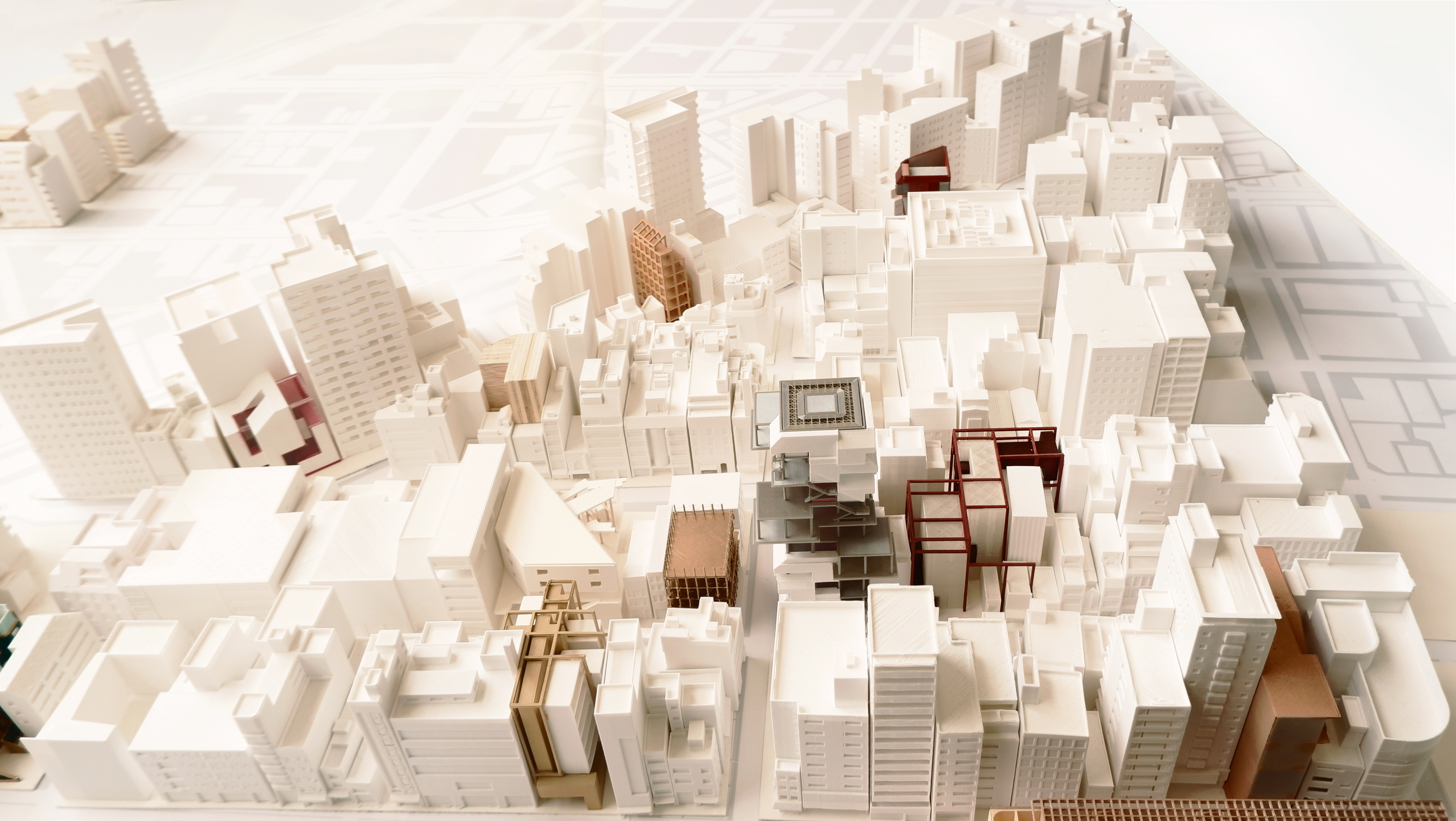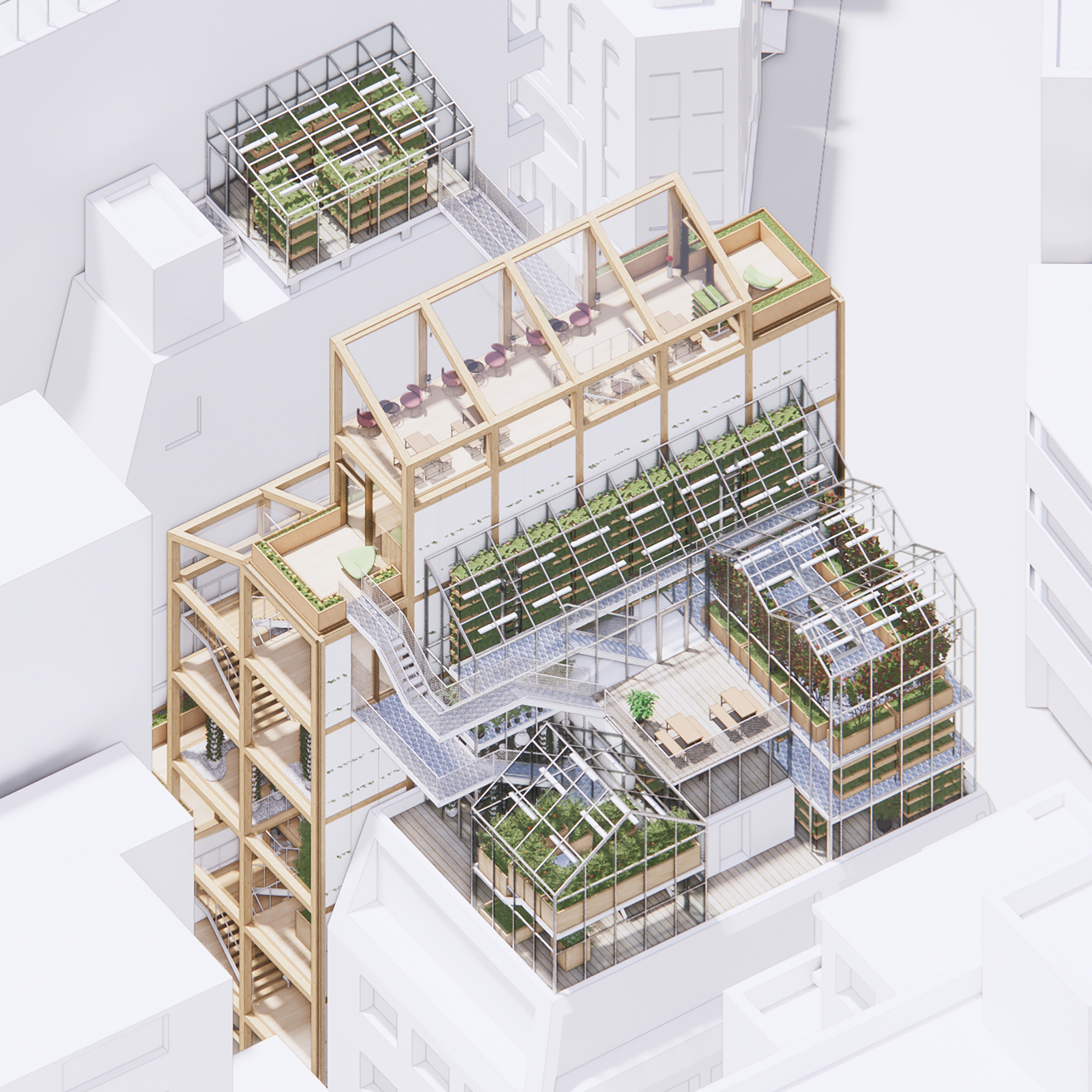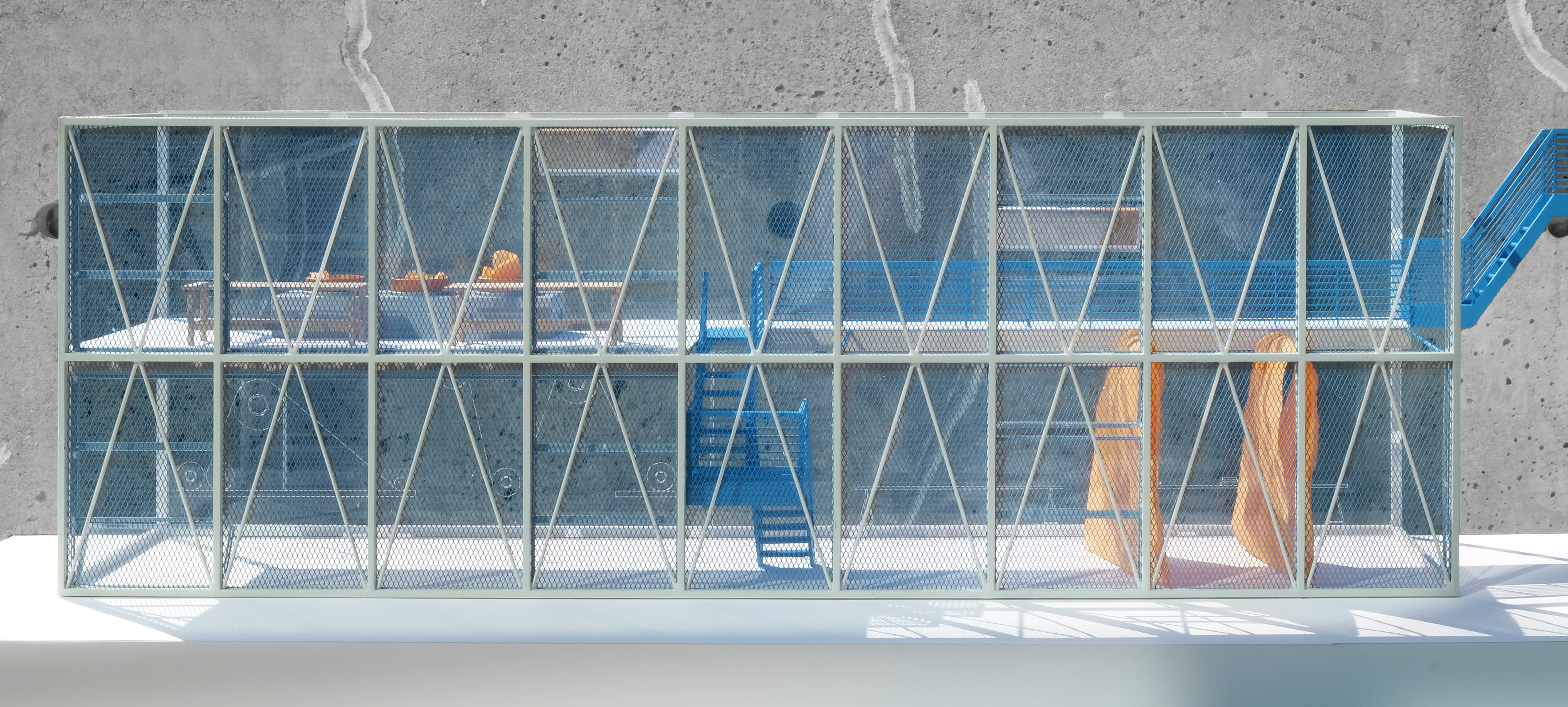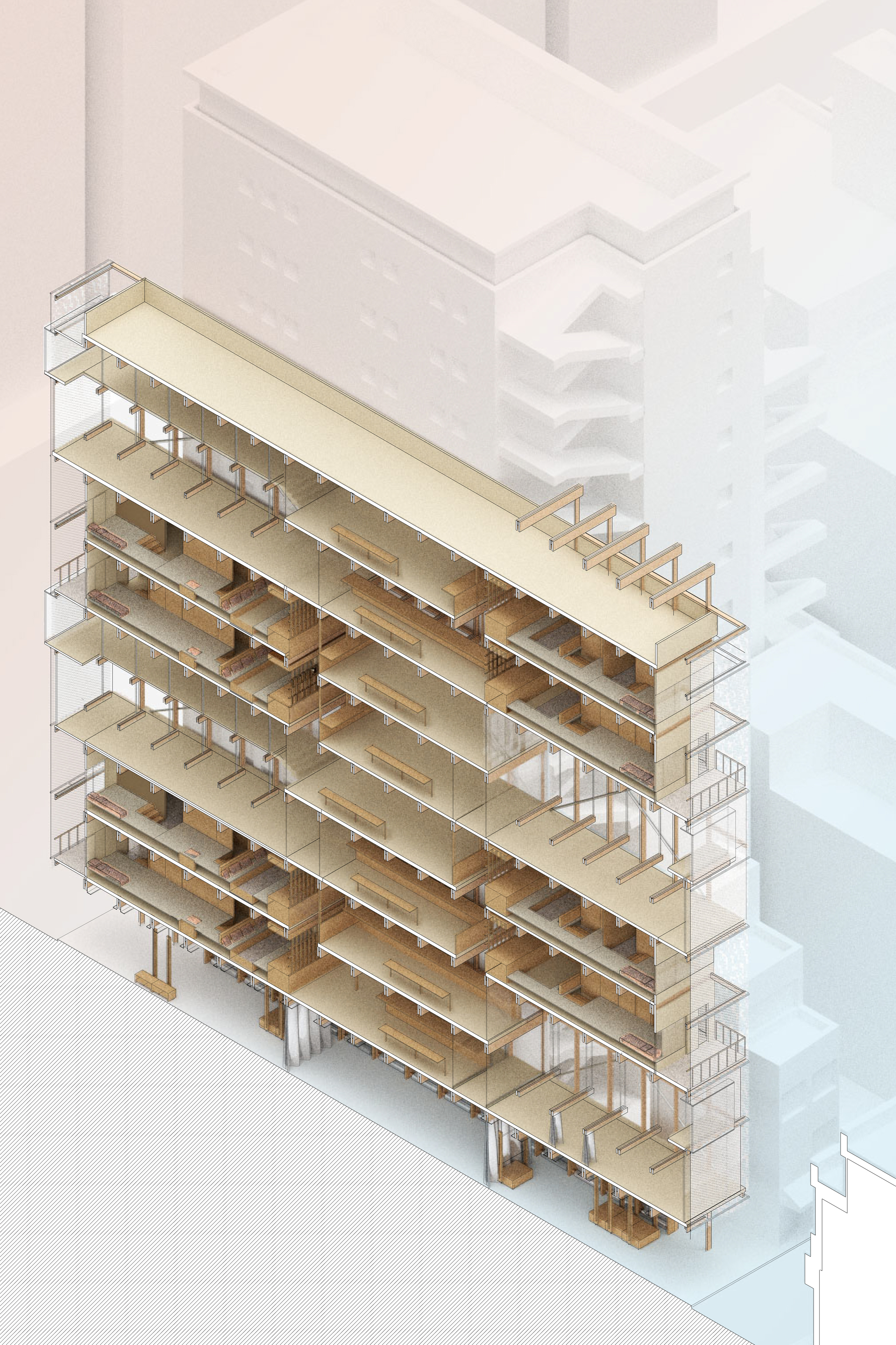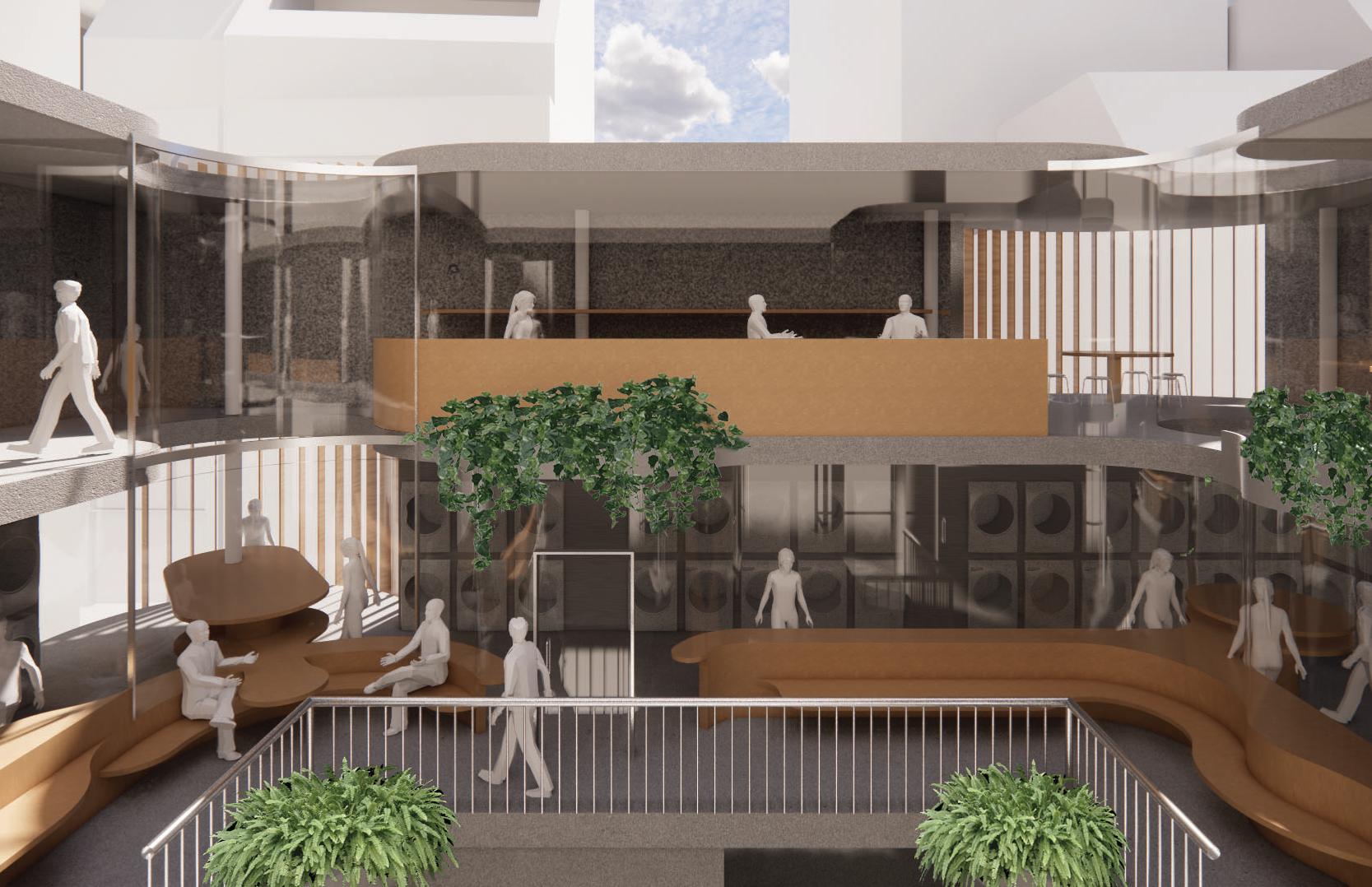House + Ballet Studio
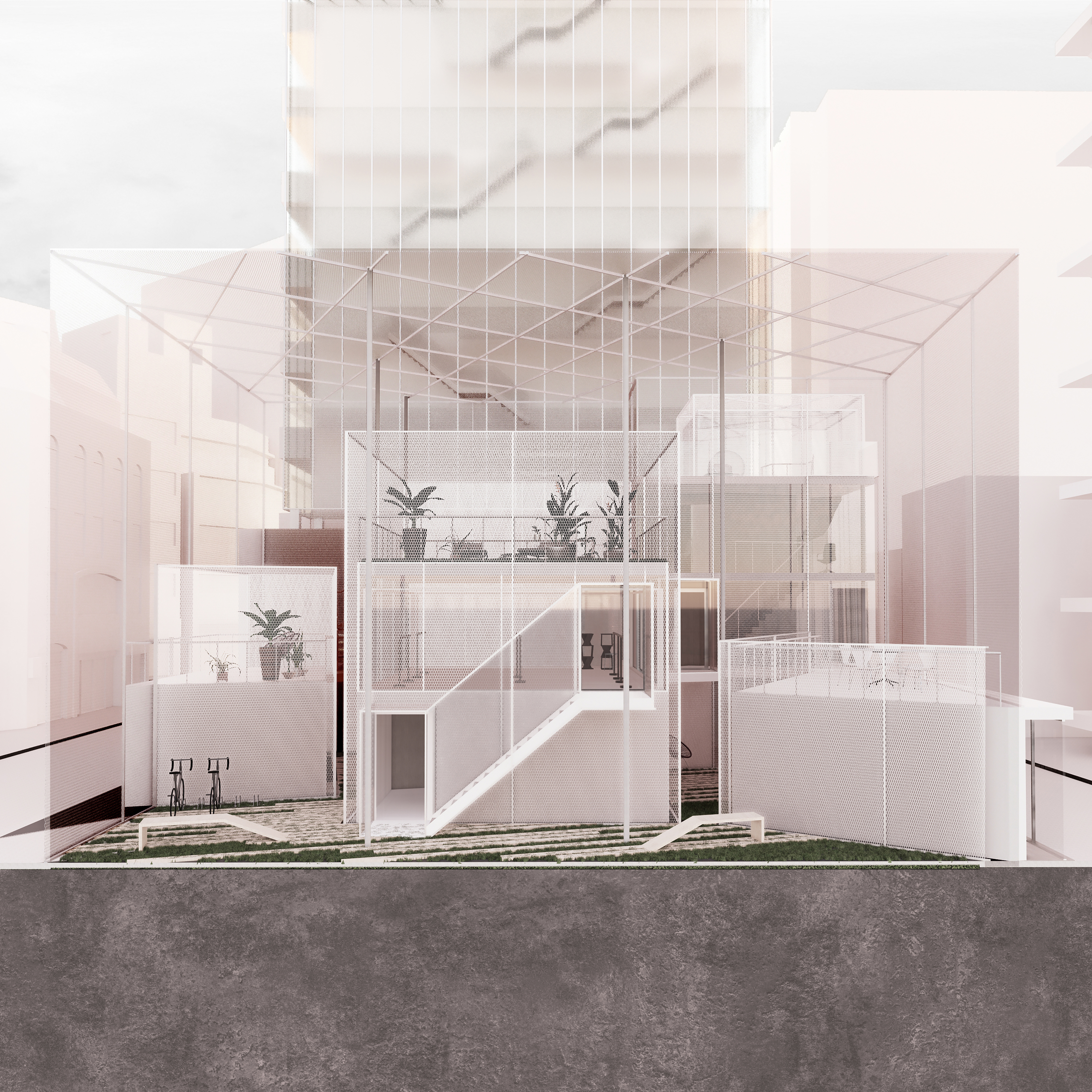
Collective site model demonstrating the juxtaposition of projects. The intention is to combine individual projects (artifacts) to form the basis for the physical and social revitalization of this part of Tokyo.
The sites for the projects of this studio are in the Tokyo neighborhood of Yokoyamacho and Bakurocho. This shrinking, blue-collar neighborhood is made up of a diverse range of business activities. Historically, the neighborhood has been known as the garment and accessory wholesale district of the city. Yet the character of the neighborhood is changing. Recently, the area has become the subject of increasing interest by a younger generation of people who are seeking new ways to live and work there—a prospect welcomed by the older residents.
Unlike the zoning regulations of many western cities, Tokyo’s policies are more open to the mixing and adjacency of functions. This situation creates many exciting opportunities for architecture. These include the use of both infill and open sites, interiors, modification of the existing building stock, roofscapes, gardens, and landscapes.
Polemically, the work of the design studio is situated between the prevalent large-scale projects of major developers and the very small-scale interventions of traditional neighborhoods. How can architecture, urban design, and landscape play a significant role in the transformation of the district without resorting to the hegemony of a megaproject? Can we construct a coherent and systematic urban design strategy for the district, based on the proximity of multiscalar design proposals?
The overall intention of the studio is to combine the individual projects (artifacts) to form the basis for the physical and social revitalization of this unique part of Tokyo. In many of the projects, the connections between the notions of artifice and the social world are further developed and reinforced through a consideration of the natural world. This phenomenon with its links to natural systems, climate, and environmental issues and risks provided the basis for unconventional approaches to the topic, including the use of roofscapes.
The work presented here explores the idea of an intensive and curated approach toward the rebuilding of neighborhoods—one that relies on the realization of many proposals, not as one-offs over a long duration but rather as a systematic and coordinated approach to urban transformation. We use the term “architecture as urbanism” to describe the key characteristic of our design methodology.
